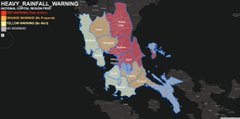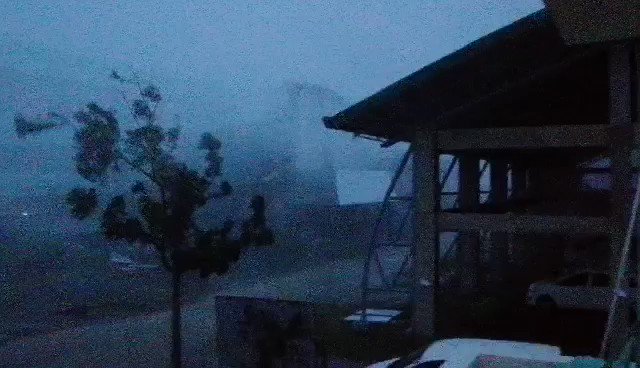Updated May. 15, 2020 2:47 PM
Tropical Storm Ambo, also known as Vongfong, made the sixth of numerous expected landfalls over the eastern Philippines on Friday, local time. Although the tropical system has begun to lose wind intensity, it will still forge a path of destruction over the country's northern islands through the weekend.

Satellite shows Ambo, also known as Vongfong, as the destructive storm moves across the northern Philippines Friday afternoon, local time. (Photo/RAMMB)
Ambo strengthened throughout the week as it tracked over the warm waters of the Philippine Sea and became the first named tropical system in the Northern Pacific Ocean of 2020. On Thursday afternoon, the former typhoon had wind speeds around 155 km/h (96 mph), making it equivalent to a Category 3 hurricane in the Atlantic and East Pacific basins.
Although Ambo has lost wind intensity and is no longer a typhoon, it still poses a significant flooding threat across the northern Philippines. As a result, the PAGASA has heavy rainfall warnings and flooding advisories issued across regions of Luzon, including a red warning in Metro Manila on Friday evening. A total of 93 mm (3.66 inches) of rain fell in parts of the city on Friday.
At least two people have been injured as of Friday afternoon, and 13,000 have been forced to leave their homes, according to the Philippine News Agency. A total of 48 towns also suffered power outages across Samar and Biliran.

In preparation of the storm, towns forecast to be in the path of the typhoon issued evacuations and distribution of relief packages.
CLICK HERE FOR THE FREE ACCUWEATHER APP
Given the ongoing global COVID-19 pandemic, evacuees were required to wear
The New York Times reports that 50,000 people took refuge in evacuation shelters. This is increasing the concern for further spread of the virus
Towns are not the only ones preparing for the storm. There have been reports of at least 20 cruise ships that moved out to sea to avoid bumping into each other while anchored.
According to AccuWeather Senior Meteorologist Dave Houk, the more time Ambo remains over the islands, the faster it will weaken.
"The mountains on each of the islands have the potential to rip Ambo apart and weaken it considerably," Houk added.
Wind gusts near an AccuWeather Local StormMax™ of 200 km/h (125 mph) will become less likely as Ambo loses strength.

Regardless of the strength of the storm, heavy tropical downpours throughout Saturday night can increase the risk of flooding and mudslides across Luzon.
"There will be a lot of moisture associated with this system, which will help to
As much as 100-200 mm (4-8 inches) is possible across the northern Philippines.

The heaviest rain is likely to follow the center and just east of the storm's path, as moisture is pulled in from the warm Philippine Sea. It is in this region that the AccuWeather Local StormMax™ of 300 mm (12 inches) is most likely.
The AccuWeather Local StormMax™ rainfall is expected to remain to the north and east of Manila, though rainfall of 75-150 mm (3-6 inches) is expected in the city.
As Ambo continues to track to the north then northeast this weekend, it will bring some rain and gusty thunderstorms to parts of southern Taiwan, but due to
Ambo is forecast to continue to weaken into the beginning of next week as it moves over cooler water and is absorbed by a nontropical system that will be
RELATED:
After developing over the weekend, the storm was given the name Ambo by the Philippine Atmospheric, Geophysical and Astronomical Services Administration (PAGASA). The Japan Meteorological Agency (JMA) is also monitoring this system and is using the name Vongfong.
According to PAGASA, Ambo made its first landfall over San Policarpo, in the province of Eastern Samar, at 12:15 p.m. Thursday, local time.
After barreling through Eastern Samar, the typhoon made five additional landfall across islands in the northern Philippines.
Keep checking back on AccuWeather.com and stay tuned to the AccuWeather Network on DirecTV, Frontier and Verizon Fios.










No comments:
Post a Comment